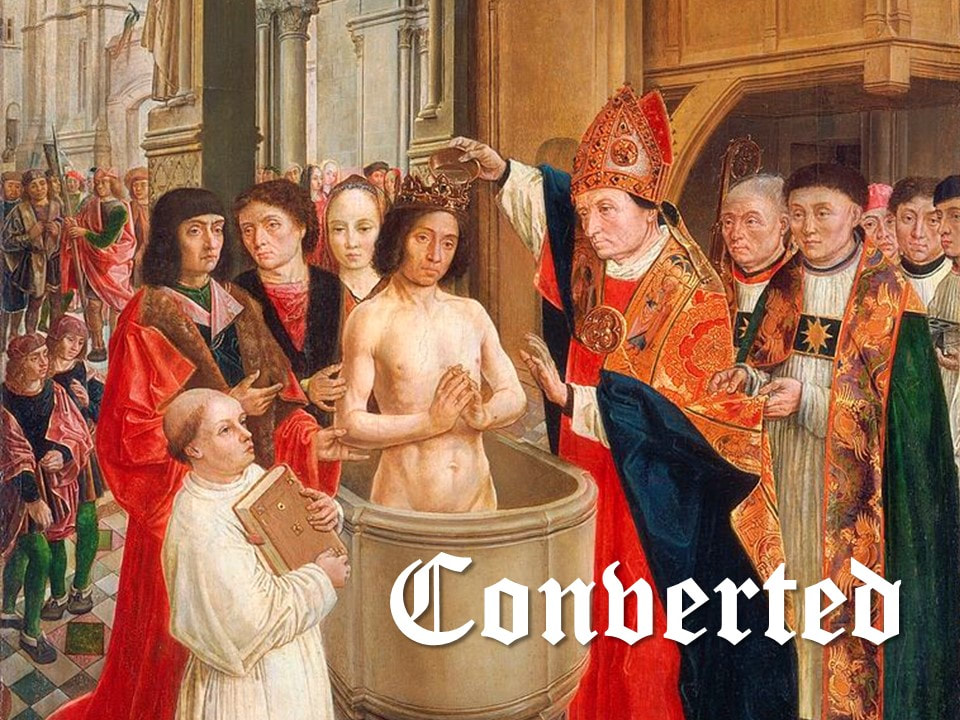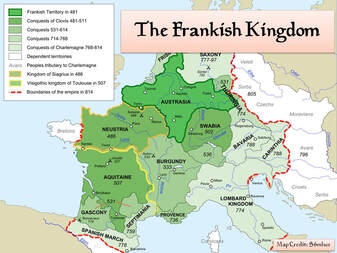The Fall of RomeAfter the Fall of the Roman Empire left Western Europe in chaos, the Franks rose to prominence to fill the power vacuum in the Early Middle Ages and had a lasting effect on the development of Western Europe.
Over the following three centuries, the Franks would come out on top, building an empire that stretched from present-day Spain to present-day Germany. Clovis and the Frankish Kingdom
Over the following two centuries, the Frankish Kingdom grew powerful – powerful enough to halt the expansion of the Islamic Caliphate which had conquered the entirety of North Africa and Spain. In 732, Charles Martel commanded the victorious Frankish army in the decisive Battle of Tours, which halted the Caliphate’s expansion and cemented the Frankish Kingdom’s place as Western Europe’s preeminent power. In recognition of his victory, Charles was given the honorific nickname, “the Hammer.” The Carolingian DynastyCharles Martel’s son, Pepin the Short, overthrew the Frankish king, usurping the throne with the Pope’s blessing, establishing the Carolingian Dynasty (The House of Charles). The close ties between the Franks and the Papacy would continue into the reign of Pepin’s son, Charles the Great, popularly remembered by his French name, Charlemagne. Charlemagne expanded the Frankish Kingdom through military conquests, including a campaign into Italy to assist the Pope against his enemies. In appreciation for Charlemagne’s support, the Pope crowned him “Emperor of the Romans” in 800. A thousand years later, Napoleon, the Emperor of France, would honor Charlemagne in the iconic series of paintings by Jacques-Louis David of Napoleon Crossing the Alps. Etched into the stones in the bottom left corner of the painting are Napoleon’s name, along with the names of Hannibal, who had crossed the Alps to attack Rome, and Charlemagne (written in Latin as KAROLVS MAGNVS), who had crossed the Alps to help the Pope and expand the Frankish Empire into Italy – just as Napoleon was, at the time, expanding the French Empire into Italy.
The Western Europe of the High Middle Ages would not be governed as a centralized state, but as a patchwork quilt of feudal kingdoms where local lords held more authority than the kings to whom they swore allegiance. But the Franks were not without impact. They laid the foundation for the Kingdom of France, secured the Pope’s position as the leader of Christians in Western Europe, and led indirectly to the medieval institution of a Holy Roman Empire ruled by Germans.
0 Comments
Your comment will be posted after it is approved.
Leave a Reply. |
Tom RicheyI teach history and government Archives
May 2023
Categories
All
|





 RSS Feed
RSS Feed